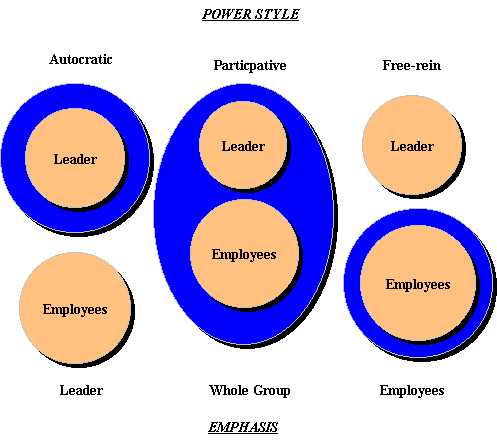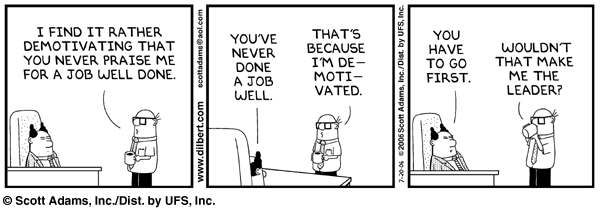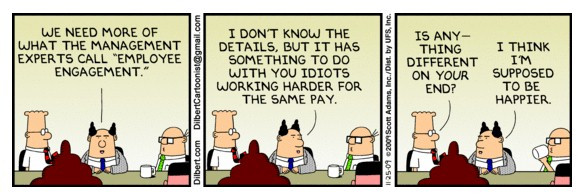 What are the types of leadership styles?
What are the types of leadership styles?
Many of us lead our way and our way only, meaning the one way we know how and that feels most comfortable to us regardless of the person or the situation. As you get older, you do adapt. For example, I’m much more authoritative with my children when they need discipline where, in normal day-to-day situations, I’d be way more coaching.
SO what are the different leadership styles? I think a good place to start this discussion are on the 6 types of leadership styles that Daniel Goleman covers in huge bestseller, Emotional Intelligence. He determined that there are 6 main styles that leaders use to motivate people. Each one requires different leadership qualities. You can also refer to my blog on The Top 10 Leadership Books Ever for more information.
As I go over these, keep in mind that you’ll tap into the different leadership styles based on 2 main factors:
1. The Situation – I’m going to handle a team of volunteers way differently than a team of my employees who I pay to work. Being too authoritative with volunteers just doesn’t “fit”.
2. The Person You’re Leading – This is where personality types really come into play. You need to take some time to get to know the people you’re trying to lead and what motivates them. Some people just like a hug and some encouragement. If I went up to one of my top income earners and said, “Oh, it’s okay. Try better next time. Money isn’t all that matters.” They’d smack me.
Your leadership qualities need to be very flexible and diverse to deal with all of the different personality types.
However, there are other people on the team who would be offended that I thought all they wanted to do was make money when they’re looking to make a difference in the world.
See, if I led people the way I like to be led, then I just end up with a bunch of people like me…. and that’s dysfunctional on sooo many levels! It takes all types of personalities to have a great team.
Keep in mind these different leadership styles are not mutually exclusive. You don’t need to perfect one and ignore the others. In fact, as you read them, keep in mind situations where they would be appropriate and with whom. Also, when could you the different leadership styles in conjunction with one another?
6 Types of Leadership Styles
(Drum roll please . . . . . . . )
1. Visionary. This type of leadership style is most appropriate when a team or an organization needs a new direction or strategy. The goal here is to move your team to a new set of dreams or “Vision”. “Visionary leaders articulate where a group is going, but not how it will get there – setting people free to innovate, experiment, take calculated risks,” writes Goleman.
This is one of my personal favorite “go to” type of leadership style but can be frustrating for the detail types. These leaders inspire an entrepreneurial spirit and enthusiasm for the goal.
2. The Coach. This is all about on-on-one attention and personal development. It works great with people who are hungry and ready to grow. If you find someone resistant to this, chances are they’re feeling micromanaged or are uncomfortable with change.
3. The Affiliate. This type of leadership style helps to create emotional bonds that bring a feeling belonging or friendship. It works best in times of stress, when trust needs to be re-built or something bad has happened.
WARNING: This type of leadership style should not be used alone, because a sole reliance on recognition and nurturing can lead to low performance and an unclear direction. It should be used in conjunction with the other different leadership styles.

4. The Pacesetter. This is a total “Do as I do” kind of model and one that I’ve personally relied heavily on over the years. The speed of the pack is determined by the speed of the leader. (I LOVE saying that last sentence!)
When using this type of leadership style, you have to model the very expectations you have of your team. But, be careful here… Goleman warns this style can undercut morale and make people feel as if they are failing…
I literally, just yesterday, had a situation where I discussed my personal production to one of my sales leaders who didn’t take it as motivation, but as me not helping him.
The disfunction in my brain immediately said “What a WIMP!” but we must realize that we’re not all wired the same way. What’s motivating to one personality type may be completely un-motivating to another. This requires some expert leadership qualities selection that I’m always growing in.
5. The Democrat. This style builds consensus through participation. You’ll use, “What do you think?” often. The democratic style is most effective when the leader needs the team to buy into or have ownership of a decision, plan, or goal, or if he or she is uncertain and needs fresh ideas from qualified teammates. You don’t want to use this in emergencies, for obvious reasons. “There’s a fire. What do you think, team? Should we evacuate? Should we vote on which exit to use?” No, that would be a time for the 6th type of leadership style.
6. The Commander. This type of leadership style is likely the most often used, but the least often effective because it rarely involves positive reinforcement and frequently uses criticism. This style can crush morale and passion. Still, in emergency situations, it can be a very effective!
Another time to use this is when you’ve tried everything else. Sometimes, “Just do what I say” works. Typically, though, you want to avoid this in professional situations. With your kids, uh, it can be a different story and quite effective when used with the other styles.




